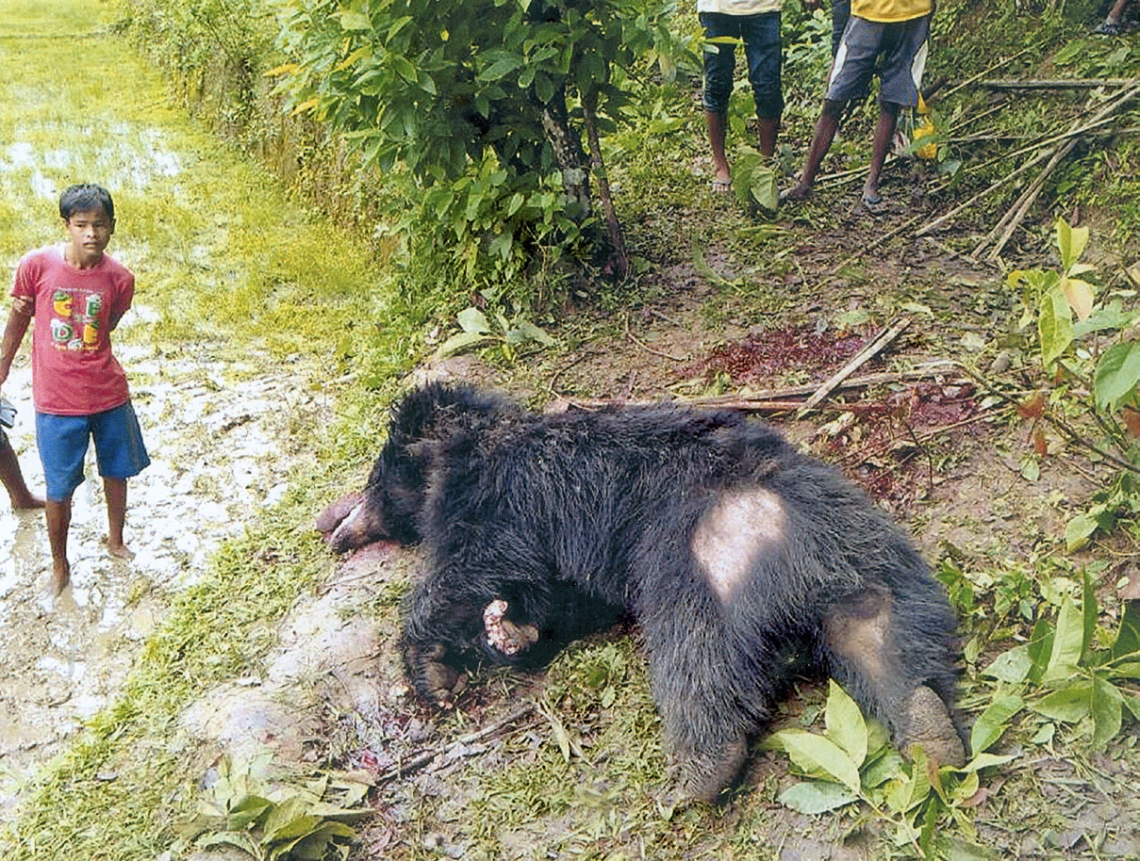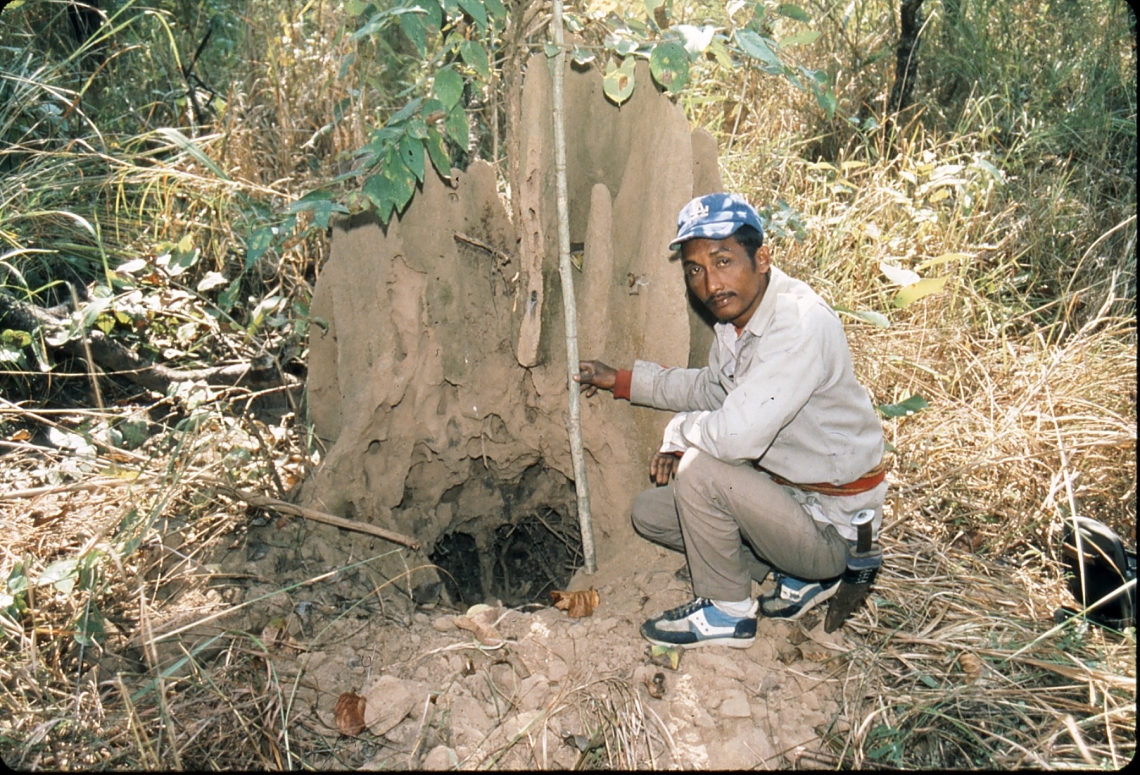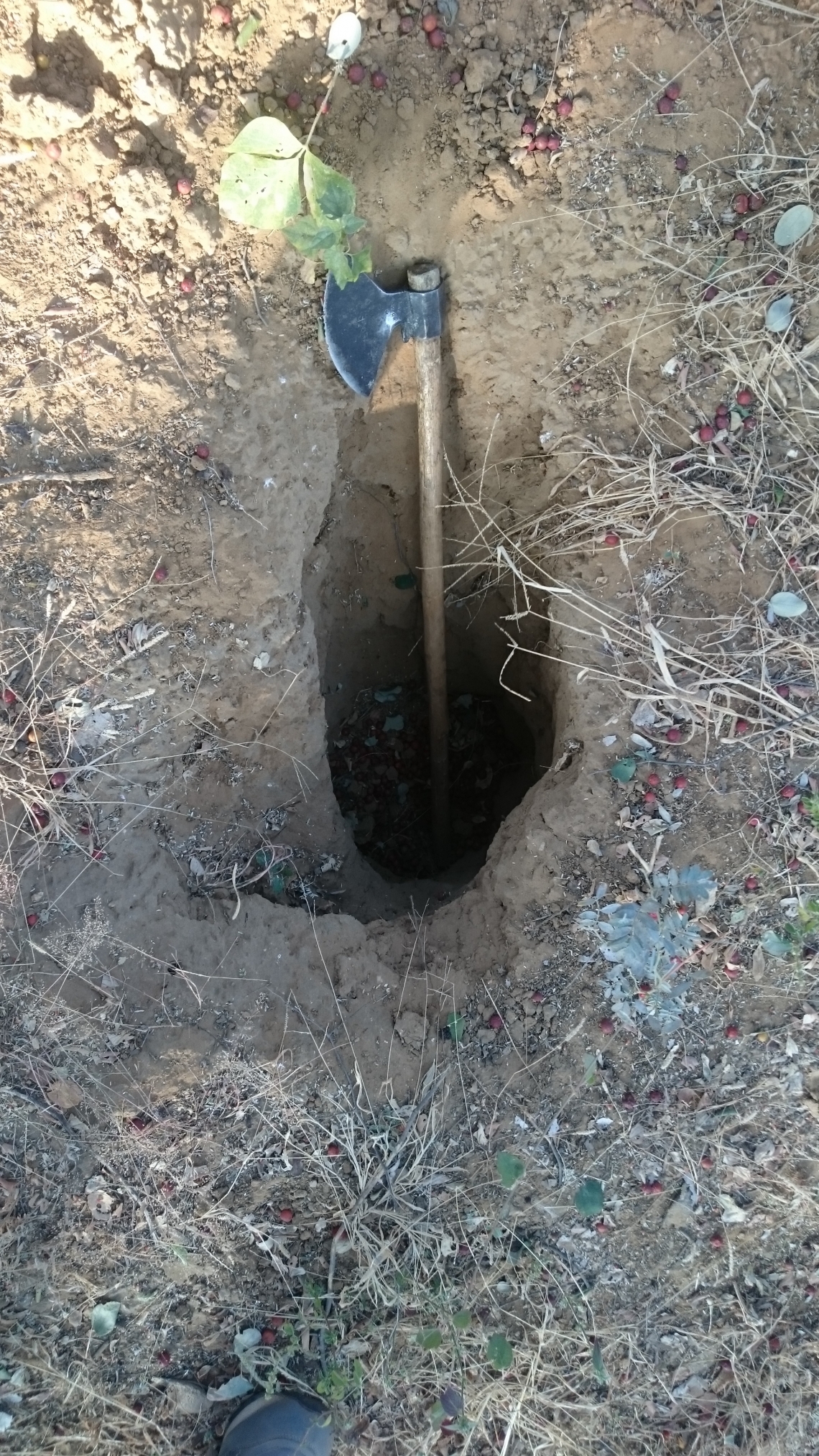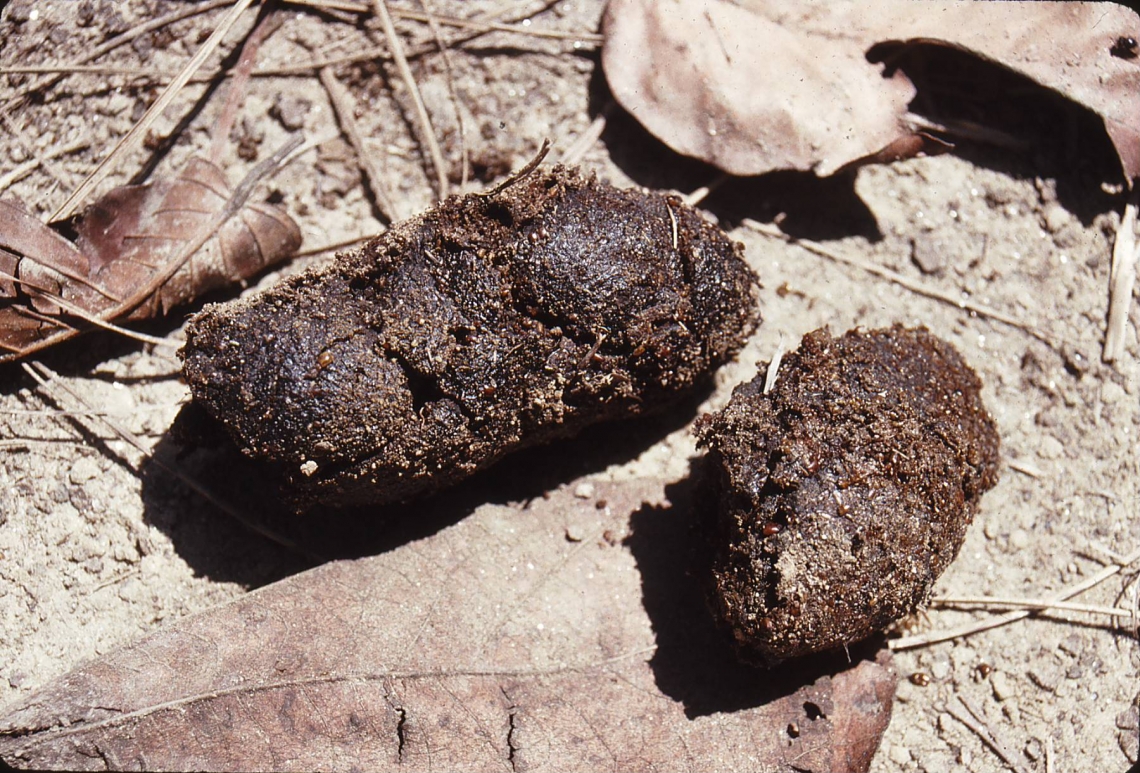Causes of mortality: There have been few formal studies of sloth bear mortality. A study in southern India, which documented causes of death for sloth bears that died due to human causes, found that leading causes were snares, explosive devices, and road kills. Sloth bears are generally not targeted for sale of parts, but are captured incidentally in snares set for wild boar and hares. Likewise, explosives set to kill depredating animals inadvertently kill sloth bears.
Some sloth bears are intentionally killed in conflicts with people. Unlike other bears, these human–conflicts are not generally related to bears damaging crops or property, but as a real or perceived threat to people’s safety. Many people are attacked by sloth bears, often resulting in significant lacerations to the face. As a consequence, sloth bears are often killed when attacking or perceived as threatening to attack.

Sloth bear_M ursinus_Assam India_killed by village mob after attacking people in abandoned tea plantation_Forest Department, Assam
Population estimation methods: There has been only one rigorous population estimate: a mark–resight estimate where radio-collared bears were the marked population, and sightings of bears, some with collars and some not as the resight sample. Surveys of bear sign, especially diggings in termite mounds or in the ground, have been used to ascertain relative densities among different areas or habitats. Sign has also been used to estimate occupancy (% of grid cells likely to be occupied by bears). Population trend has been deduced from sign, sightings, interviews, and changes in area and quality of habitat.

Sloth bear_M ursinus_Chitwan Nepal_hole dug in termite mound population index_D Garshelis

Sloth bear_M ursinus_Gujarat India_digging sign_N Dharaiya

Sloth bear_M ursinus_Chitwan Nepal_radiotracking by elephant_D Garshelis

Sloth bear_M ursinus_Nepal_termite filled scats used for sloth bear presence and genetics_D Garshelis
Local population estimates: Sloth bears typically have small, highly overlapping home ranges and can occur at high densities in prime habitats (e.g., areas with a high density of termites). A study in Royal Chitwan National Park, Nepal, estimated a density of 27 bears/100 km², and as high as 72 bears/100 km² in a core area of the park.
Country and global population estimates: No valid country or rangewide estimates exist for this species. Depending on methods and data employed, rangewide estimates have varied from <10,000 to >20,000, and total estimated range area varies from 200,000–400,000 km2.
Population trends: Increased habitat fragmentation and a decrease in occupied habitat have been observed in many parts of their range, indicative of population declines. The extirpation of this species in Bangladesh was a clear indication of decline in the eastern part of their range. However, some western Indian states (Gujarat, Rajasthan) have reported an increasing population.